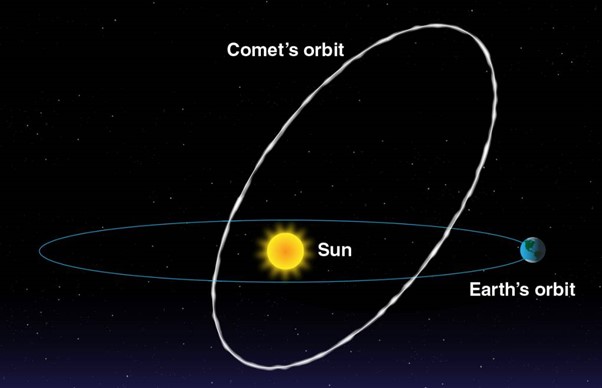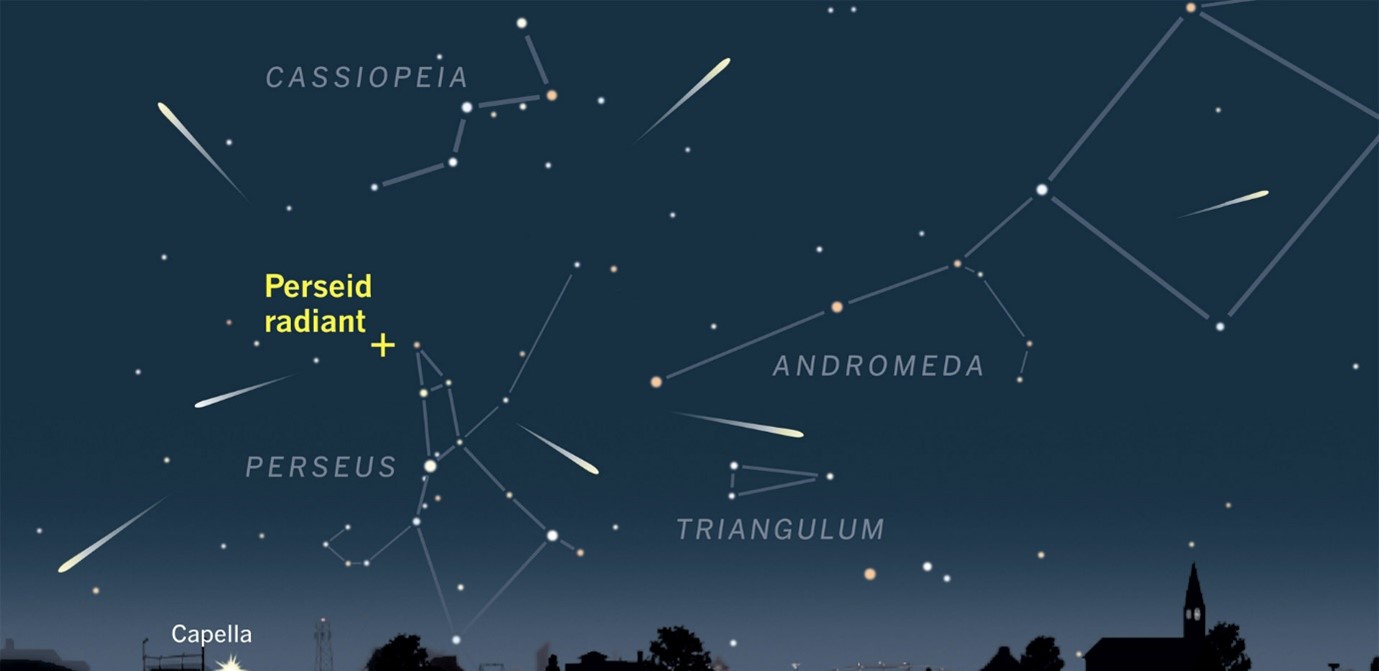What's Up? August 2023
Welcomne to your monthly guide on what astronomical objects you can find in the skies this August!
What's Up? August 2023
Astronomer and Science Communicator Ishbel Carlyle talks us through what we can see in the skies this August, and there's plenty to keep your telescopes busy...
Astronomical darkness returns! We get official “night” come August 6th when the Sun will dip low enough beyond the horizon to make it dark enough to be worthy of the definition of night.
And it’s a good thing too, because in August we have the Perseid meteor shower! So, what is a meteor shower and why is this one Perseids?
Meteor showers are made up of little bits of space rock entering our atmosphere really fast, so fast that they can ignite the air around them, just like when you strike a match and get the spark before the flame, and the result is a bright light flashing across the sky. These are what we call Shooting Stars! Which is a big misnomer as they are actually really little. On average the size of rock coming through our atmosphere is the size of a grain of sand, the bigger flashes maybe produced by rock up to a tennis ball in size, so no need to worry about being hit by one. Space rocks can land on Earth but that’s a story for a different day. Meteors can be sporadic, coming in randomly, but meteor showers are caused by something special. They come from the tails of comets. A comet is a large ball of rock and ice that orbit in huge elliptic (oval) motions around our solar system, sometimes going from beyond Neptune to the inner solar system. Of course, this takes hundreds to thousands of years. As a comet orbits around the Sun, it does what most things that are ice do, it melts, and deposits a trail of rocks behind it. We then orbit into this trail, usually on a yearly basis. I’ve found a diagram to show this.

Figure 1. Image credit kqed.org
So why are they called the Perseids? If you look up a list of meteor showers you will hopefully start to recognise that their names coincide with names of constellations. This is because, as the meteors are all approaching from the same direction as the Earth goes through the comet trail, the patch of the sky they go through is the same year on year and seems to emanate from one direction known as the radiant point. Since the sky is a jigsaw of constellations, which ever constellation the radiant point lines up with is the showers name. Now all you need to do is find the constellation, lie back, and count the “stars” streaming across the sky. The Perseids is a particularly good shower as it can produce up to one hundred shooting stars an hour! And this year we are in luck as the peak (August 13th) falls on the run up to New Moon (August 16th) so there will a completely dark sky.

Figure 2. A night sky map looking northeast throughout August.
Speaking of moons, the other exciting night sky feature August is offering is not just one but two Full moons. That’s right- a Blue Moon! A Blue Moon is the second full moon in one month, as usually since the lunar cycle is about 28 days long there is only one full moon every month. This month we’ve got a full moon on the 1st and the 31st. Unfortunately, this means a Blue Moon is not actually blue, it is just like any other full moon.
Happy stargazing!
















